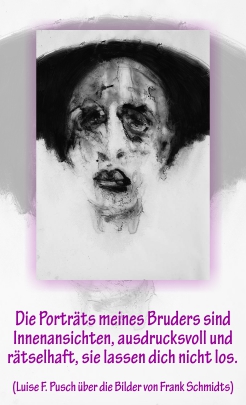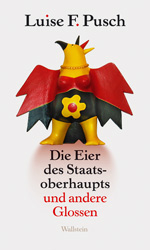
born on October 29, 1903 in Leipzig
died on January 25, 1975 in Hannover
German dancer, choreographer and ballet mistress
Biography • Literature & Sources
Biography
Along with Gret Palucca and Hanya Holm, Yvonne Georgi belongs among the best-known students of Mary Wigman; in her roles as dancer, choreographer and ballet mistress she exercised a decisive influence on the field of dance for decades. During the 1920's she and Harald Kreutzberg delighted audiences on their tours in the USA and inspired young dancers such as José Limón.
Yvonne Georgi was born in Leipzig, the daughter of a respected physician and a French mother who was more than twenty years her husband's junior. It is rare and in fact amazing that the talent of this great artist, who had no dance instruction as a child, was discovered almost by chance during a pantomime performance at the home of a friend. She was seventeen years old at the time, finished with school and beginning her training to become a librarian at the famous German Library in Leipzig. At this point she began to study dance on the side and was soon performing her own self-created dances at the variety shows held for young people in a Leipzig department store.
When Georgi realized that dancing was to be not merely a hobby for her but her life's purpose she broke off her training for librarianship and moved to Hellerau, where she began study at the Delcroze Institute. Her parents continued to support her but without enthusiasm for her choice; her father especially was opposed to dance as a profession for his daughter. She stayed barely two months in Hellerau; the instruction was too “rhythmic-gymnastic” for her. She introduced herself to Mary Wigman, whom she had seen at a dance performance in Leipzig, and was accepted into Wigman's Dresden school of dance. Within a few years enthusiastic audiences were cheering Georgi in solo dance performances and in duo appearances with Gret Palucca. In the fall of 1924 Kurt Joos engaged her as solo dancer for the Stadttheater in Münster, and during the 1925/26 season, at the Reußisches Theater in Gera, she became the youngest ballet mistress in Germany.
After her successful year in Gera Georgi moved to the Städtische Bühnen Hannover (City Stages of Hannover) as ballet mistress and opened her own school of dance. From the first Georgi had shown a preference for modern composers, and under her aegis Hannover blossomed into a center for modern interpretive dance (Ausdruckstanz). Her performances gained international attention and respect, and invitations for guest appearances followed. In 1927 Harald Kreutzberg joined Georgi's company as a solo dancer. The first Georgi-Kreutzberg duo performances took place around this time; photographs convey to this day the convincing harmony of these two equally powerful personalities.
Georgi remained in Hanover through the season of 1931/32. In 1932 she married L.M.G. Arntzenius, music critic and feuilleton editor of De Telegraaf in Holland. Thanks to half-year contracts in Hanover her fans could still cheer their Georgi for a while, but in 1936 she resettled permanently in Amsterdam and set about developing a national ballet in the Netherlands. In Scheveningen she and her troupe were regularly the high point of the season. Back in Germany after the war, Georgi directed the Düsseldorf Ballet from 1951 to 1954, when she returned to Hanover for good. Here, at the State Theater, she found the ideal conditions for building a highly qualified ballet company with a truly modern repertory. In addition to the usual appearances in operas and operettas the ballet was guaranteed its own separate performances. Georgi also directed the dance department of Hanover's Institute of Music and Theater, where she was appointed professor in 1959.
In Hanover Georgi succeeded in putting into practice her own concept of a synthesis of classical and modern dance. Under her aegis the city witnessed numerous première performances, among them the Electronic Ballet in 1957 to the music of Henk Badings. But the Georgi-era was unforgettable not only because of her exciting stage productions, major ballets, chamber ballet evenings in the Ballhof, or contributions to the Herrenhausen festival performances; only Georgi's understanding for and engagement on behalf of of her dancers could have made possible such a productive and harmonious collaboration over two decades.
(translated by Joey Horsley)
Author: Adriane von Hoop
Literature & Sources
Bremser, Martha u.a. 1993. International Dictionary of Ballet, vol. 1. Detroit; London. St. James Press.
Cohen, Selma Jeanne. 1998. International Encyclopedia of Dance. vol. 3. New York; Oxford. Oxford University Press.
Koegler, Horst. 1963. Yvonne Georgi. Friedrich. Velber bei Hannover.
Regitz, Hartmut Hg. 1984. Tanz in Deutschland. Berlin. Quadriga Verlag J. Severin.
Schäfer, Rolf. 1974. Yvonne Georgi. Braunschweig.
Schmidt, Jochen. 2002. Tanzgeschichte des 20. Jahrhunderts in einem Band. Berlin. Henschel.
Wille, Hansjürgen. 1930. Harald Kreutzberg – Yvonne Georgi. Leipzig.
If you hold the rights to one or more of the images on this page and object to its/their appearance here, please contact Fembio.



